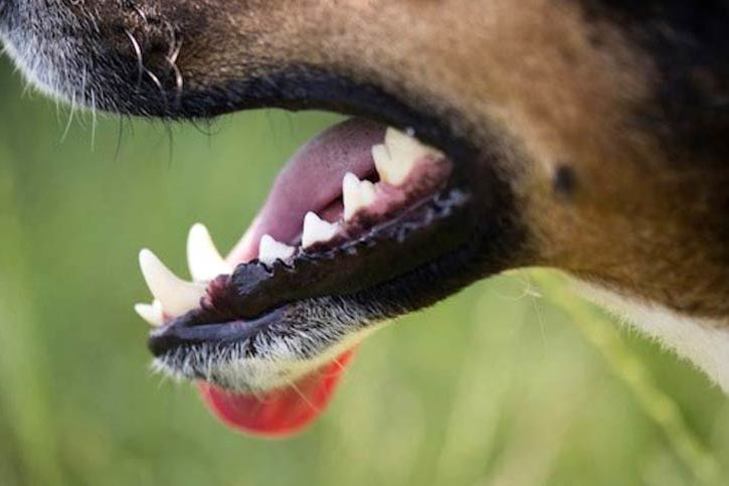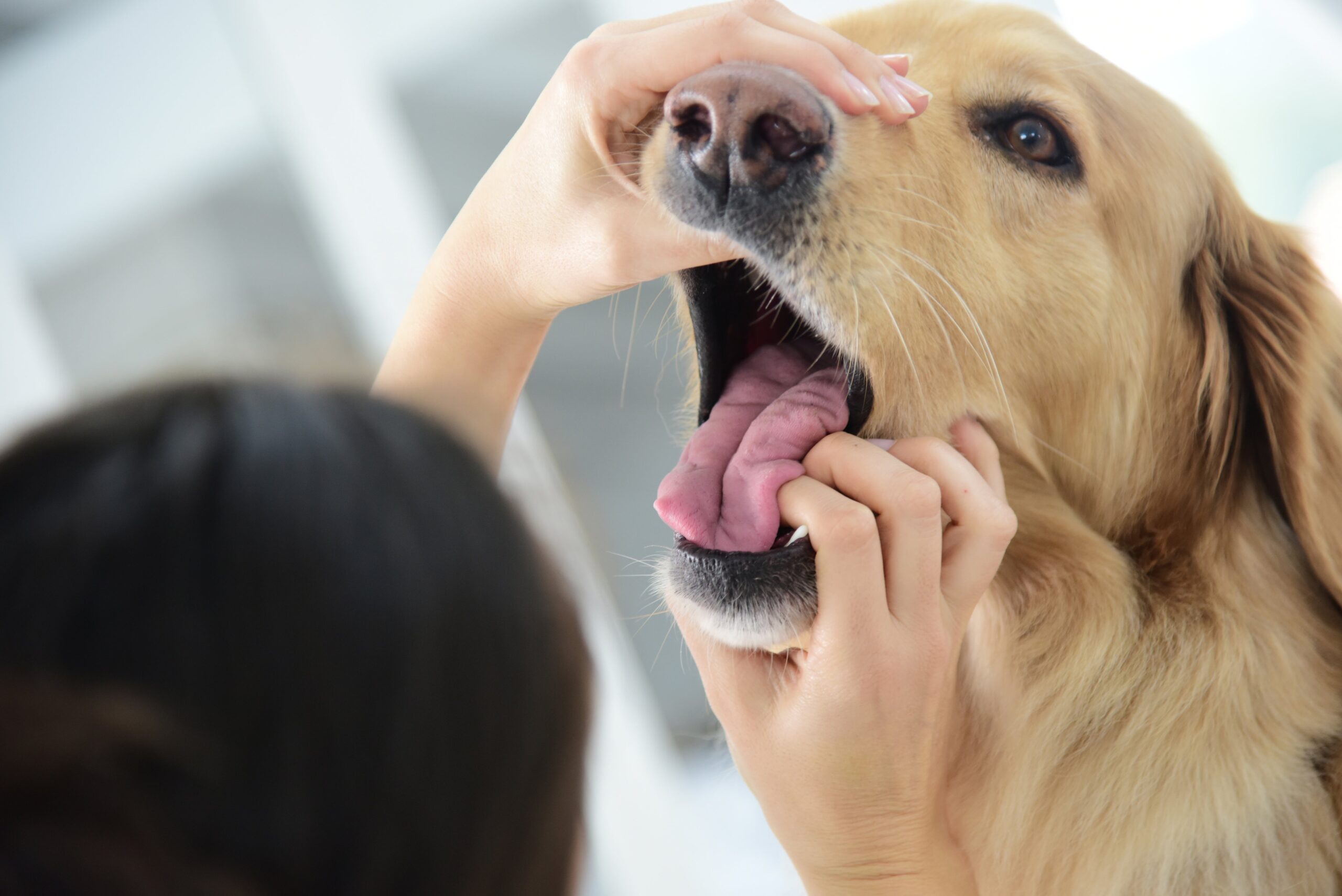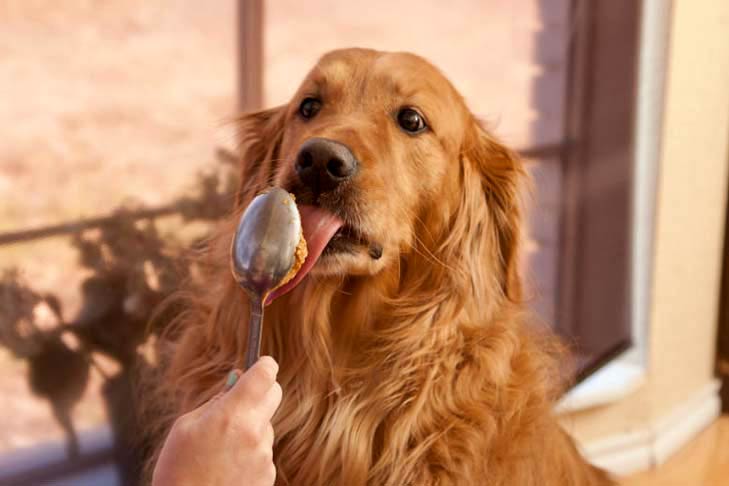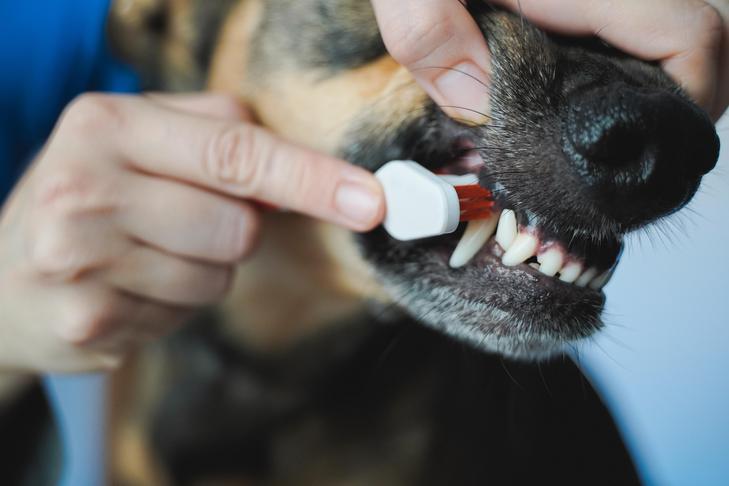
Recommendations on how you can Care for Your Canine When They Have a Unfastened Tooth
[ad_1]
It’s common for puppies to lose their main tooth. For an grownup canine, a free or wiggly tooth is likely to be the outcomes of an injury or a sign of dental sickness. And since dental sickness takes years to develop, we now have a chance to intervene and cease tooth loss, starting with good dental hygiene.
Prevention is the best approach for avoiding dental points. Nevertheless in case you occur to happen to notice that your canine has a free tooth, it’s needed to hunt the recommendation of your veterinarian to make it possible for your canine receives effectively timed care. Your vet can present suggestion on the best way to improve your canine’s oral effectively being.
When Do Puppies Lose Their Tooth?
Puppies are born with out tooth. As soon as they’re about three weeks earlier, their little one tooth start to erupt until they attain their full complement of 28 main tooth (though some puppies have fewer). Typically, by six months of age, puppies might have misplaced all their main tooth and end up with 42 grownup tooth.
“You could uncover your pet rubbing their face or chewing on points or see a little bit of little little bit of blood on a toy or throughout the water bowl,” based mostly on Dr. Amy Attas, VMD. “All is likely to be indications that tooth are throughout the technique of falling out.”
How Can You Inform If Your Canine Has a Unfastened Tooth?
Canines of all sizes have the equivalent number of tooth. “Nevertheless the smaller the canine, the additional crowded their mouth is,” Dr. Attas explains. Some breeds similar to the Pug, Pekingese, and Bulldog have shorter snouts, which can make it extra sturdy to acknowledge free tooth. “On account of that crowding, sometimes a tooth is diseased and wiggling, nevertheless you’ll miss it,” she says.
Like us, canines can chunk down the inaccurate means and fracture their tooth. It’s less complicated to see a stub or sharp edge if a tooth breaks in half. Nevertheless when the fracture is close to the gum line, it might be more durable to detect.
In such circumstances, you can maintain an eye fixed mounted out for the following indicators of a free or wiggly tooth:
- Tilting their head to not less than one facet when consuming
- Solely chewing on one facet of the mouth
- Reluctant to play tug-of-war video video games
- Not selecting up toys with their mouth
- Preferring canned or home-cooked meals to dry meals
- Solely consuming kibble as quickly because it’s softened
“Your canine might suppose that they’re speculated to actually really feel this vogue and don’t perceive one factor is wrong,” Dr. Attas says. “Sometimes we don’t even understand how uncomfortable that they had been until we preserve their mouths and find out how lots higher they actually really feel.”
What Causes Tooth Loss in Canines?
There are two major causes that grownup canines lose their tooth. The first is any injury that outcomes from being struck with one factor exhausting or chewing one factor exhausting, akin to sticks and rocks or furnishings, Dr. Attas says. The second (and most common) trigger for tooth loss in grownup canines is dental sickness.
Though a canine weight reduction plan includes a lot much less sugar than a human weight reduction plan, canines can nonetheless develop dental tartar and decay. As tartar accumulates and hardens, “it’s a wonderful environment for micro organism,” she says. Their gums can grow to be contaminated along with the premise. As quickly as this happens, the premise can decay and set off the tooth to wiggle.
How Can You Cease Tooth Loss in Canines?
“Whereas a canine can break a tooth in a millisecond, dental sickness takes a very very very long time to develop,” Dr. Attas says. “If we’re brushing correct from the beginning, their tooth are a lot much less vulnerable to develop decay. It may happen additional slowly and be a a lot much less extreme case.” Getting your canine cozy with tooth brushing takes time and persistence. Listed below are some steps to make brushing your canine’s tooth a optimistic experience:
- Start by touching the pores and skin of your canine’s mouth. Reward and reward them with a take care of.
- Elevate the best lip and preserve it while you contact the canine’s excessive tooth and gums with no toothbrush. Then, do the equivalent for the underside lip, tooth, and gums. Reward them with reward and a take care of.
- Choose a toothbrush designed for canines that fits over your index finger, so you can actually really feel how lots stress you’re making use of. Contact the comb to your canine’s tooth (entrance, facet, and once more) on the underside and excessive of their mouths. Make certain they’re cozy with this step sooner than introducing toothpaste.
- Apply a small amount of canine toothpaste in your finger and let your canine sniff and elegance it.
- Attempt brushing their excessive tooth with toothpaste whereas holding up the upper lip. Reward and reward.
- Repeat Step 5, going further once more into your pet’s mouth (to the facet and the once more on the best of the mouth).
- Repeat Steps 5 and 6 with the underside tooth.
Maintain intervals temporary and frequent. All you need is 30 to 60 seconds. You could brush the proper facet sometime and the left facet the next.
Most importantly, your canine need to be eager to participate. “Within the occasion that they start to growl or act like they must chunk, it’s inappropriate as a way to proceed,” Dr. Attas says. You could practice your canine to tolerate and even have the benefit of tooth brushing, nevertheless “you shouldn’t do one thing spherical your canine’s mouth that may end in you turning into injured,” she supplies.
Along with brushing, be careful with toys or chews that will damage your canine’s tooth. Whereas tennis balls are a favorite toy to many canines, they aren’t top-of-the-line for theri tooth. “When canines chew on tennis balls, the nylon fiber info down the canine’s tooth,” Dr. Attas emphasizes. “With extra sturdy chews like bones or antlers, there’s always a menace of breaking a tooth.”
How Do You Take care of a Wiggly Tooth?
Dental sickness is a extreme effectively being topic. It’s essential to search the recommendation of your veterinarian in case your canine has a free tooth or any ache or discomfort of their mouth. “If a tooth is diseased, top-of-the-line methods to take care of that is to extract it,” Dr. Attas explains. “Grownup canines have 42 tooth. Within the occasion that they’re missing 10 of them, they’re nonetheless going to be optimistic.”
Extracting tooth is simply not a magnificence course of. “If canines have a mouthful of micro organism and infections present, that micro organism have the potential to go to totally different parts of the physique,” she says. “It doesn’t matter what variety of tooth ought to be extracted. If it’s an unhealthy tooth, now we have to get it out of the mouth.” Antibiotics may assist take care of the an an infection, nevertheless you proceed to need to take care of the underlying set off, which is likely to be a diseased root or tooth.
One exception to that’s working canines that should maintain their full complement of tooth. If, as an illustration, a police canine fractures their canine tooth, the vet may counsel doing a root canal to keep away from losing the tooth as an alternative of eradicating it. “We’re in a position to do root canals on canines, nevertheless they take much more anesthesia they often’re much more expensive,” she supplies.
Are Expert Dental Cleanings Wanted For Canines?
Even in case you occur to brush your canine’s tooth repeatedly, they nonetheless need a expert dental cleaning. “Sometimes of us say they will do an anesthesia-free tooth cleaning,” Dr. Attas says. “The one means to do this accurately is beneath regular anesthesia.” Your vet may need to X-ray your canine’s mouth to have a look at the standing of the roots. With frequent tooth brushing, there shall be a lot much less buildup of dental tartar (additionally known as calculus) and your canine gained’t should go to the vet for tooth points as often. In addition to, they’ll spend a lot much less time beneath anesthesia and the method shall be cheap.
Dr. Attas says that canines’ tooth are hardly fully white. “The part of the tooth that is nearer to the gum line shall be a barely completely totally different shade as a result of buildup of calculus,” she says. If a tooth is diseased or decayed, blood may pool throughout the canal beneath and discolor the tooth, making it look grayish or blue in shade. “What you see of a tooth is rather like the tip of the iceberg,” Dr. Attas supplies.
In case your canine is usually good at having their tooth brushed and now seems uncomfortable, “you can take care of the problem prolonged sooner than it turns right into a wiggly tooth,” she says. She recommends shopping for dental merchandise which have the Veterinary Oral Properly being Council label to promote good dental effectively being.
[ad_2]
Provide hyperlink


